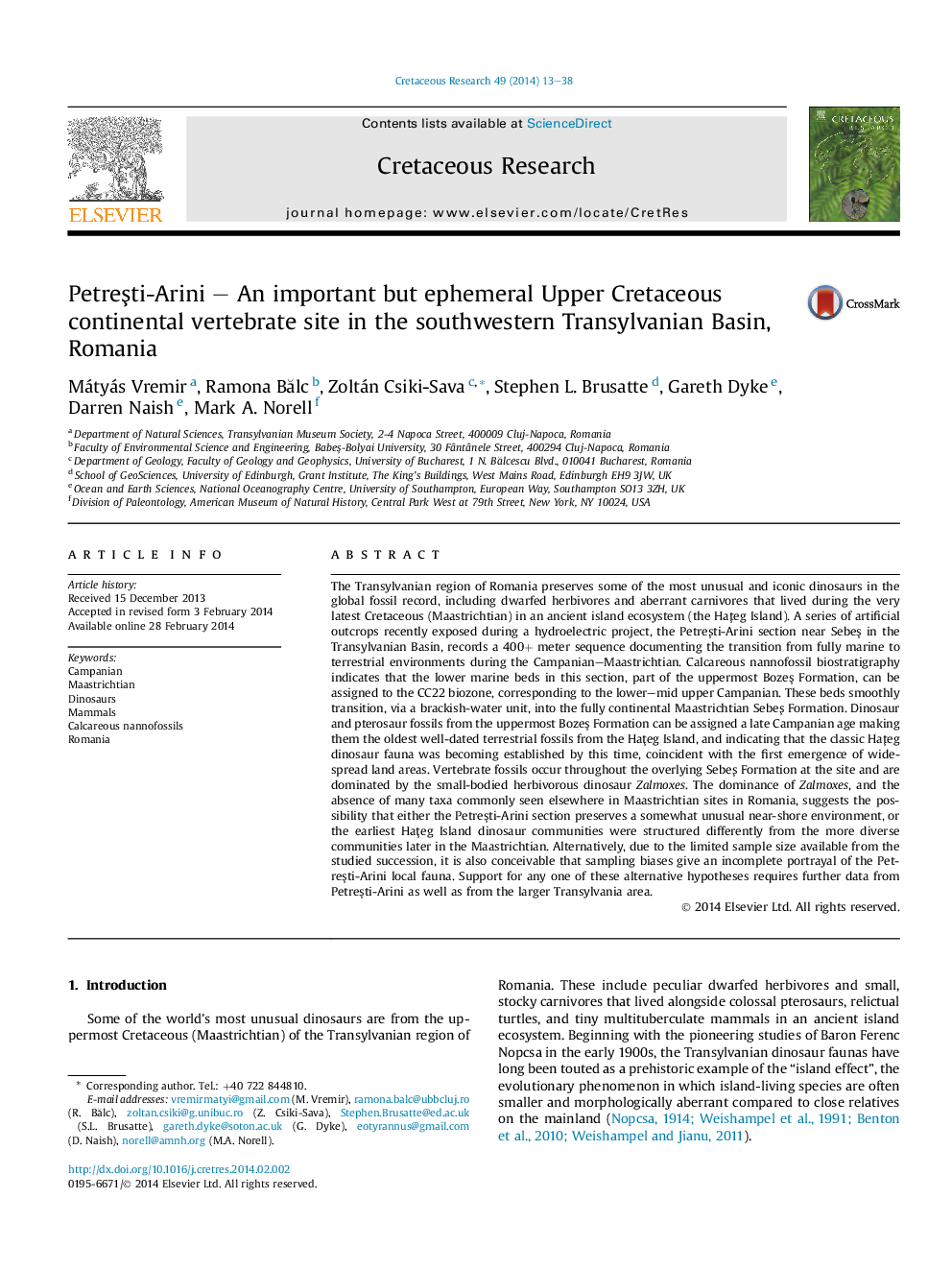| کد مقاله | کد نشریه | سال انتشار | مقاله انگلیسی | نسخه تمام متن |
|---|---|---|---|---|
| 4746995 | 1642073 | 2014 | 26 صفحه PDF | دانلود رایگان |

• Romania boasts some of the most unusual, insular dinosaurs in the fossil record.
• A new site preserves a unique late Campanian–earliest Maastrichtian fossil record.
• Dinosaurs and pterosaurs from this site are the oldest from the Haţeg Island.
• The Haţeg Island fauna was becoming established by the late Campanian.
• The site may suggest the earliest Haţeg faunas were somewhat distinct from later ones.
The Transylvanian region of Romania preserves some of the most unusual and iconic dinosaurs in the global fossil record, including dwarfed herbivores and aberrant carnivores that lived during the very latest Cretaceous (Maastrichtian) in an ancient island ecosystem (the Haţeg Island). A series of artificial outcrops recently exposed during a hydroelectric project, the Petreşti-Arini section near Sebeş in the Transylvanian Basin, records a 400+ meter sequence documenting the transition from fully marine to terrestrial environments during the Campanian–Maastrichtian. Calcareous nannofossil biostratigraphy indicates that the lower marine beds in this section, part of the uppermost Bozeş Formation, can be assigned to the CC22 biozone, corresponding to the lower–mid upper Campanian. These beds smoothly transition, via a brackish-water unit, into the fully continental Maastrichtian Sebeş Formation. Dinosaur and pterosaur fossils from the uppermost Bozeş Formation can be assigned a late Campanian age making them the oldest well-dated terrestrial fossils from the Haţeg Island, and indicating that the classic Haţeg dinosaur fauna was becoming established by this time, coincident with the first emergence of widespread land areas. Vertebrate fossils occur throughout the overlying Sebeş Formation at the site and are dominated by the small-bodied herbivorous dinosaur Zalmoxes. The dominance of Zalmoxes, and the absence of many taxa commonly seen elsewhere in Maastrichtian sites in Romania, suggests the possibility that either the Petreşti-Arini section preserves a somewhat unusual near-shore environment, or the earliest Haţeg Island dinosaur communities were structured differently from the more diverse communities later in the Maastrichtian. Alternatively, due to the limited sample size available from the studied succession, it is also conceivable that sampling biases give an incomplete portrayal of the Petreşti-Arini local fauna. Support for any one of these alternative hypotheses requires further data from Petreşti-Arini as well as from the larger Transylvania area.
Journal: Cretaceous Research - Volume 49, May 2014, Pages 13–38